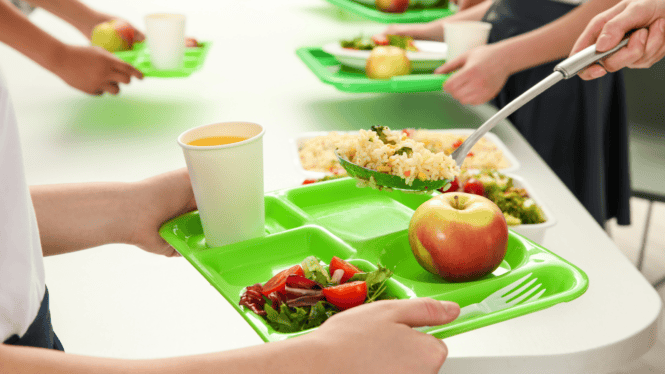- Your cart is empty
- Continue shopping
How Processed Foods Are Impacting Australia’s Kids

This isn’t just about convenience or taste. The overconsumption of processed foods poses long-term risks for children’s physical and mental well-being, setting the stage for chronic health conditions, poor academic performance, and behavioural challenges. It’s a wake-up call for parents, schools, and policymakers to rethink how we feed our kids.
The Reality of Children’s Diets in Australia
Here’s a startling fact: 39% of Australian children’s daily energy intake comes from discretionary foods, commonly referred to as “junk” food. These include chips, biscuits, sugary cereals, confectionery, soft drinks, and more. While occasional indulgence is fine, these foods have moved from treats to dietary staples for many children.
Even school canteens, which should ideally prioritize nutrition, often fall short of promoting healthier options. While there has been progress, with some schools adopting stricter guidelines, unhealthy snacks and processed foods remain widely available. And let’s not forget the lunchboxes packed at home, where ultra-processed bars, flavored drinks, and packaged chips are often the norm.
This shift in dietary habits has alarming consequences for Australia’s children, whose growth and development depend on proper nutrition.

Why Processed Foods Are a Problem
Processed foods are designed for convenience and taste, but their impact on children’s health is anything but beneficial.
1. Nutrient Deficiency
Ultra-processed foods are calorie-dense but nutrient-poor. They are often stripped of essential vitamins and minerals during production and fortified with artificial substitutes that don’t offer the same benefits as nutrients from whole foods. This lack of nutrition can impair growth, immune function, and overall well-being.
2. Obesity and Chronic Disease
Childhood obesity is a growing concern in Australia, with 25% of children aged 5–17 classified as overweight or obese. Diets high in added sugar, unhealthy fats, and refined carbohydrates contribute significantly to these statistics. Beyond obesity, poor nutrition in childhood increases the risk of Type 2 diabetes, cardiovascular disease, and even certain types of cancer later in life.
3. Cognitive and Behavioural Challenges
Nutrition doesn’t just impact physical health—it plays a critical role in brain function. Diets high in sugar and processed ingredients have been linked to behavioural issues, hyperactivity, and mood swings. On the flip side, children who consume balanced diets rich in nutrients tend to perform better academically and exhibit improved focus and emotional regulation.
The Role of School Lunches
Schools have the power to shape children’s eating habits by providing nutritious, balanced meals during a crucial part of their day. Yet, school canteens in Australia still face challenges in aligning their menus with recommended dietary guidelines.
Many schools offer healthier options, but these are often overshadowed by the availability of packaged snacks, sugary drinks, and fried foods. This lack of consistency in nutritional standards undermines the efforts to promote healthy eating habits.
When children regularly consume ultra-processed foods at school, it normalises poor dietary choices. Over time, this can lead to ingrained habits that persist well into adulthood, perpetuating a cycle of unhealthy eating.
Rethinking Food for Kids: A Path Forward
If we’re serious about protecting the health of future generations, we must address the dominance of processed foods in children’s diets. The good news? Solutions exist, and they are both innovative and practical.
1. Using AI to Assess School Lunches
Artificial Intelligence (AI) has transformed industries like healthcare and logistics. It’s time to bring this technology into the realm of child nutrition. AI can help schools and parents make smarter choices by:
- Analyzing Nutritional Content: AI can quickly evaluate school menus to flag meals with excessive sugar, unhealthy fats, or low nutrient density.
- Providing Recommendations: Based on its analysis, AI could suggest healthier alternatives to enhance the nutritional value of meals.
- Customising Solutions: AI can tailor meal plans to meet the specific dietary needs of different schools or communities, ensuring every child gets the nutrients they require.
2. Blockchain for Transparency
One of the biggest challenges in improving school lunches is the lack of transparency in food sourcing and preparation. Blockchain technology offers a solution by creating an open, traceable system for monitoring food quality.
- Tracking Ingredients: Blockchain can trace every ingredient from farm to plate, ensuring that it meets ethical and nutritional standards.
- Ensuring Accountability: Schools can use blockchain to verify that their meals comply with national dietary guidelines.
- Building Trust: Parents can access detailed information about what their children are eating, fostering confidence in the school’s commitment to healthy food.
By implementing blockchain, we can guarantee that every meal served in schools is both nutritious and responsibly sourced.
3. Prioritising Whole, Nutritious Foods
While technology is essential, there’s no substitute for returning to basics. Whole foods—fresh fruits and vegetables, whole grains, lean proteins, and dairy—should form the foundation of children’s diets. Schools and parents alike need to:
- Focus on Freshness: Fresh produce should be a daily staple in school lunches.
- Minimise Processed Foods: Limit packaged snacks and replace them with homemade alternatives.
- Promote Local Sourcing: Supporting Australian farmers ensures high-quality ingredients while reducing the carbon footprint of food transportation.
Prioritising whole foods doesn’t just benefit children—it strengthens local economies and fosters a culture of health and sustainability.

The Bigger Picture: Why This Matters
Childhood is a critical window for growth and development. Proper nutrition during these formative years lays the foundation for a lifetime of health, productivity, and well-being. When children consume nutrient-rich meals, they are more likely to excel academically, maintain emotional stability, and avoid chronic illnesses.
Conversely, poor diets during childhood can have lasting consequences. Obesity, diabetes, and heart disease don’t just appear overnight—they begin with years of poor nutrition.
As a nation, Australia must recognise the urgency of improving children’s diets. The health of our kids isn’t just a personal issue—it’s a societal one.
It’s time for a collective effort to tackle the dominance of processed foods and prioritize nutrition for Australian children. Here’s how different stakeholders can contribute:
- Parents: Pack lunches filled with fresh, whole foods. Educate kids about the benefits of healthy eating and involve them in meal preparation.
- Schools: Collaborate with nutritionists and leverage technology to evaluate and improve school menus.
- Policymakers: Enforce stricter regulations on the sale of processed foods in schools and promote educational campaigns about nutrition.
- Businesses: Innovate healthier, affordable packaged food options that align with dietary guidelines for children.
Together, we can create a food system that nurtures Australia’s future generations.
EthicalHub’s Commitment
At EthicalHub, we believe that every child deserves access to nutritious, ethically sourced food. Our mission is to provide families and schools with products that are good for kids, good for the planet, and good for the community.
We’re committed to supporting local farmers, embracing technology for food transparency, and offering sustainable alternatives to processed snacks. By making healthier choices accessible and affordable, we can pave the way for a brighter, healthier future.
Final Thoughts
Australia’s reputation for fresh produce is one of its greatest assets, yet our children’s diets tell a different story. The overconsumption of processed foods is undermining their health, growth, and potential. By leveraging technology, prioritizing whole foods, and fostering accountability, we can transform the way we feed our kids.
This isn’t just about what’s on the plate—it’s about the future we’re building for the next generation. Let’s make the changes today that will shape a healthier tomorrow.



